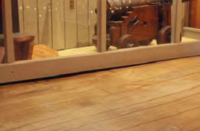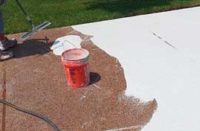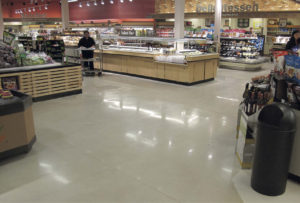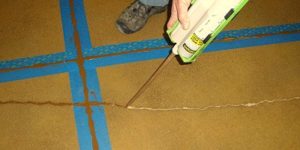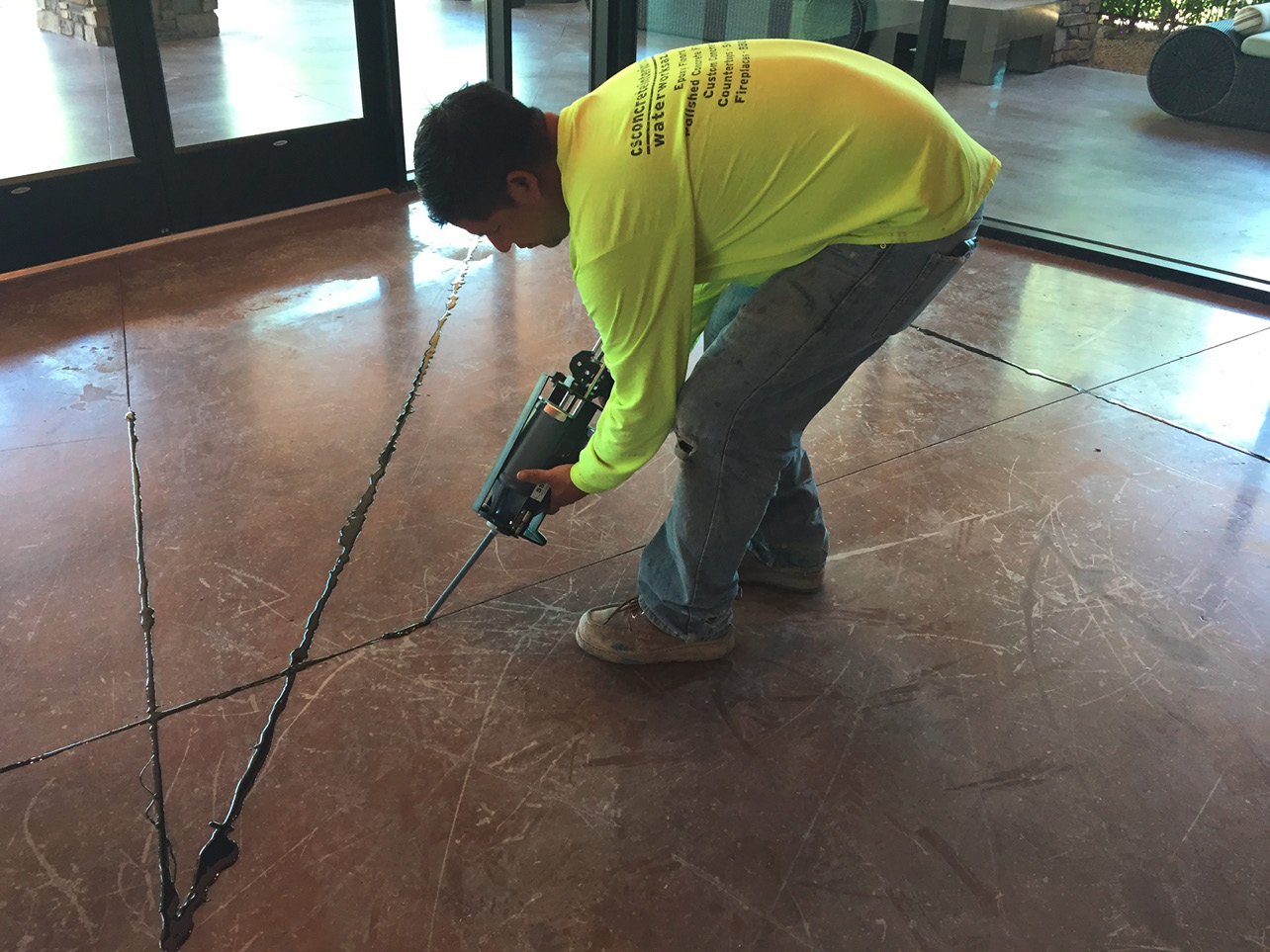
Need some perspective from the field on joint fillers and sealants? The people who are most likely to spend time with them are those who work on floors, with a heavy emphasis on the commercial and industrial markets.
For instance, Chad Gill, owner of Midlothian, Virginia-based Concreate, says his business focuses almost exclusively on commercial floors these days, with an occasional high-end residential project thrown in the mix.
“We’re going in and filling joints where they have heavy forklift traffic, steel-wheel traffic,” Gill says. “We do joint reconstruction where we shave joints down and put in a new joint where we see shoulder failure. And, we do a lot of restaurants. In those cases, we’re doing it for ease of cleaning.”
Ryan Klacking, owner of Syncon Inc. in Livonia, Michigan, says one of his company’s specialties is industrial concrete repair, including the use of a lot of joint fillers and sealants. His clients are a mix of those whose floors weren’t initially filled and those where an earlier job has failed.

Value versus the cost
“A lot of our work comes from poor installation from other contractors,” Klacking says. As for projects where the joints have never been filled, “People don’t understand the value versus the cost. They don’t understand how expensive the repair work can get. Once they allow their joints to spall out, it can mean a very expensive repair job and wider joints.”
Klacking adds that he spends a lot of time educating clients about joint filling, and Eric Pottle, a partner in Peoria, Arizona-based Concrete Interiors, says it’s a service and a product that must be sold, simply because some architects and business owners don’t understand the need.
“We try to have a conversation with them in the beginning to be able to manage their expectations,” Pottle says. “Some don’t want to spend the money, and it’s important to explain that what they need depends on the application. You have to find out how they’re going to use the space, how they expect the floor to perform, and then tailor what you’re doing to try to meet those expectations within their budget.”

Waiting is imperative
When it comes to filling and sealing joints in new floors, there should be a minimum of 28-30 days from when they’re poured until they can be worked on. Ideally the time should be even longer, although more clients are mandating it be done between 21 and 28 days after the pour. Not surprisingly, Gill says, he has run into a fair amount of pushback when telling clients that part of the job will have to wait.
“We just did some grocery stores and they’re very particular about their floors,” he says. “They waited the 28 days, but it’s really better if you can wait until they turn the air-conditioning on and get the temperature to a steady state. Otherwise, you get quite a bit of movement in the slab and a lot of elongation in the joints.”
Color matching
While a lot of industrial jobs can be filled with the client’s choice of some generic colors — black, gray and clear are popular — when it comes to polished slabs, and especially anything involving color, it’s necessary to color match the joint fillers and sealants. A lot of how hard or easy that is depends on the job.
Klacking, for instance, says his primary supplier has a full line or colors from which to choose.
“We buy the material neutral, and then offer multiple varieties of browns and grays,” he says. “If those don’t work, we then make an order for a specific product, but it’s generally simple to color match a floor.”
On the other hand, Gill relates one job his company did where they had four different colors going in the same floor, and the architect asked that the colors be divided in the joint.
“It’s hard to change colors going across a quarter-inch joint,” he says. “I would rather just put charcoal gray in.”

Use protection and follow instructions
Color matching isn’t the only issue installers need to consider when using joint fillers and sealants. Pottle says depending on the product, you may need to protect the surrounding floor, as well.
“It depends on where you are in your process,” Pottle says. “If you’ve opened up the floor and are doing a grind-and-polish and you overfill the joint, you can get some of the resin transferring to the slab, and you get a stain. I’ve had a case where I was using a polyurea and it leeched into the slab.”
In short, some jobs can be tricky if you don’t know what you’re doing and picking up the nuances can take some time. Klacking, for instance, says to learn to do a standard joint fill takes a matter of days, but to learn to do all the necessary repairs can take years.
“And, you wouldn’t believe the people who don’t follow the simple specified processes of installing joint sealants spelled out by the manufacturers,” he says. “That’s why there are so many failures.”
Relationships are important
Finding a good supplier for your needs may also take a little work. Gill suggests finding people who are active in industry organizations, are willing to offer a training session or site visit if you need it, and who will even refer business to you.
“Sure, you want to get good pricing, but the best company isn’t always going to be the one who’s charging the least per gallon,” Gill says. “You want a well-known name who — if they don’t have the answer — has the connections to get the answer you need.”
Pottle agrees. He says it’s important to try new products, but it helps to stick with one or two manufacturers’ product lines. “No two jobs are the same, and experience will give you the knowledge of what product works best in a certain situation,” he concludes. “You tailor what you’re using to the circumstances of a job.”
www.csconcreteinteriors.com
www.synconinc.com
www.thisisconcrete.com

